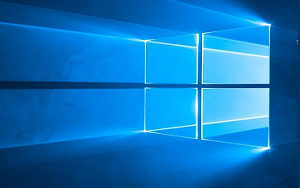Troubleshooting sound issues in Windows 11 can be a complex task, but with the right guidance, you can solve these problems efficiently. This article provides a comprehensive step-by-step approach to identifying and fixing common audio problems in Windows 11.
Introduction to Sound Issues in Windows 11
Windows 11, with its sleek design and enhanced features, is a significant upgrade from its predecessors. However, users occasionally encounter sound issues, which can range from no sound to distorted audio. This article will guide you through various methods to troubleshoot and resolve these issues.
Common Sound Problems in Windows 11
- No sound from the speakers or headphones
- Audio distortion or crackling sound
- Bluetooth audio device connection problems
- Volume control not working
Initial Checks
Before diving into technical solutions, perform these initial checks:
- Ensure the audio device is properly connected.
- Check that the volume isn't muted both on the system and the external device.
- Try using a different audio device to rule out hardware issues.
Update Sound Drivers
Outdated or corrupt sound drivers are a common cause of audio issues. Follow these steps to update them:
- Right-click on the Start button and select Device Manager.
- Expand the Sound, video and game controllers section.
- Right-click the audio device and select Update driver.
- Choose Search automatically for updated driver software.
- Follow the prompts to complete the update.
Use the Windows Troubleshooter
Windows 11 includes a built-in troubleshooter for diagnosing sound issues:
- Open Settings by pressing Win + I.
- Navigate to System > Sound.
- Scroll down and click on Troubleshoot under the Advanced section.
- Follow the on-screen instructions to identify and fix sound issues.
Check Audio Output Settings
Ensure that the correct audio output device is selected:
- Right-click on the sound icon in the taskbar and select Open Sound settings.
- Under Output, choose the appropriate audio device from the dropdown menu.
Adjust Sound Enhancements
Sound enhancements can sometimes cause issues. Disable them to see if it resolves the problem:
- Right-click the sound icon in the taskbar and choose Sounds.
- Switch to the Playback tab, select your audio device, and click Properties.
- Go to the Enhancements tab and check Disable all enhancements.
- Click Apply and OK.
Check for Windows Updates
Ensure your system is up-to-date, as updates often include sound issue fixes:
- Open Settings and go to Windows Update.
- Click Check for updates and install any available updates.
Configure Audio Services
Ensure that essential audio services are running:
- Press Win + R, type services.msc, and press Enter.
- Locate Windows Audio and Windows Audio Endpoint Builder.
- Right-click each service and select Restart.
Reinstall Audio Drivers
If updating drivers didn't work, try reinstalling them:
- Open Device Manager and expand the Sound, video and game controllers section.
- Right-click your audio device and select Uninstall device.
- Restart your computer; Windows will automatically reinstall the drivers.
Reset Windows 11
If all else fails, consider resetting Windows 11 as a last resort:
- Go to Settings > System > Recovery.
- Click Reset PC and follow the prompts.
- Choose Keep my files to retain personal data.
Conclusion
Sound issues in Windows 11 can be frustrating, but following these steps should help you resolve most problems. Keep your system updated and regularly check your audio settings to ensure optimal performance.







